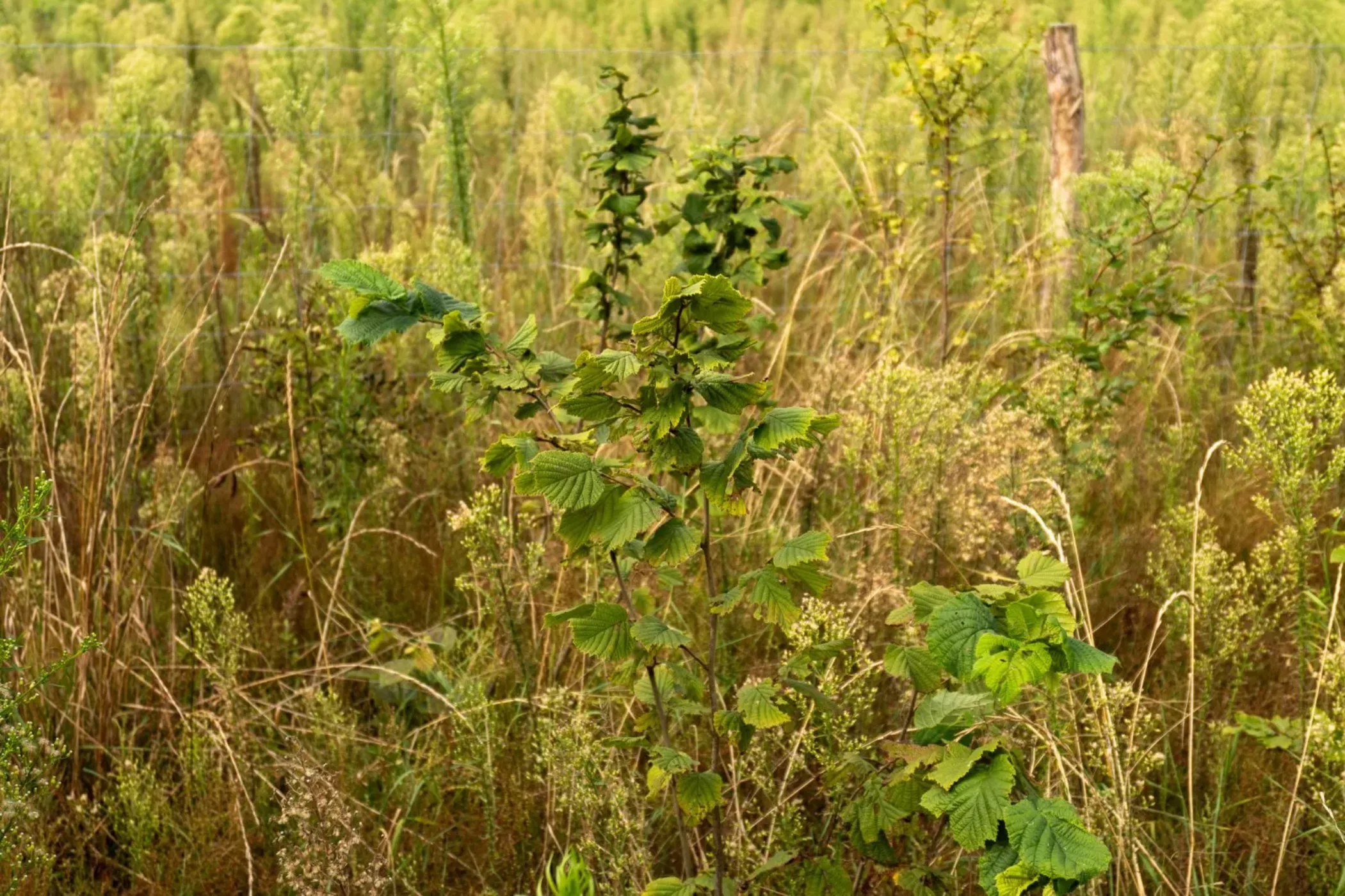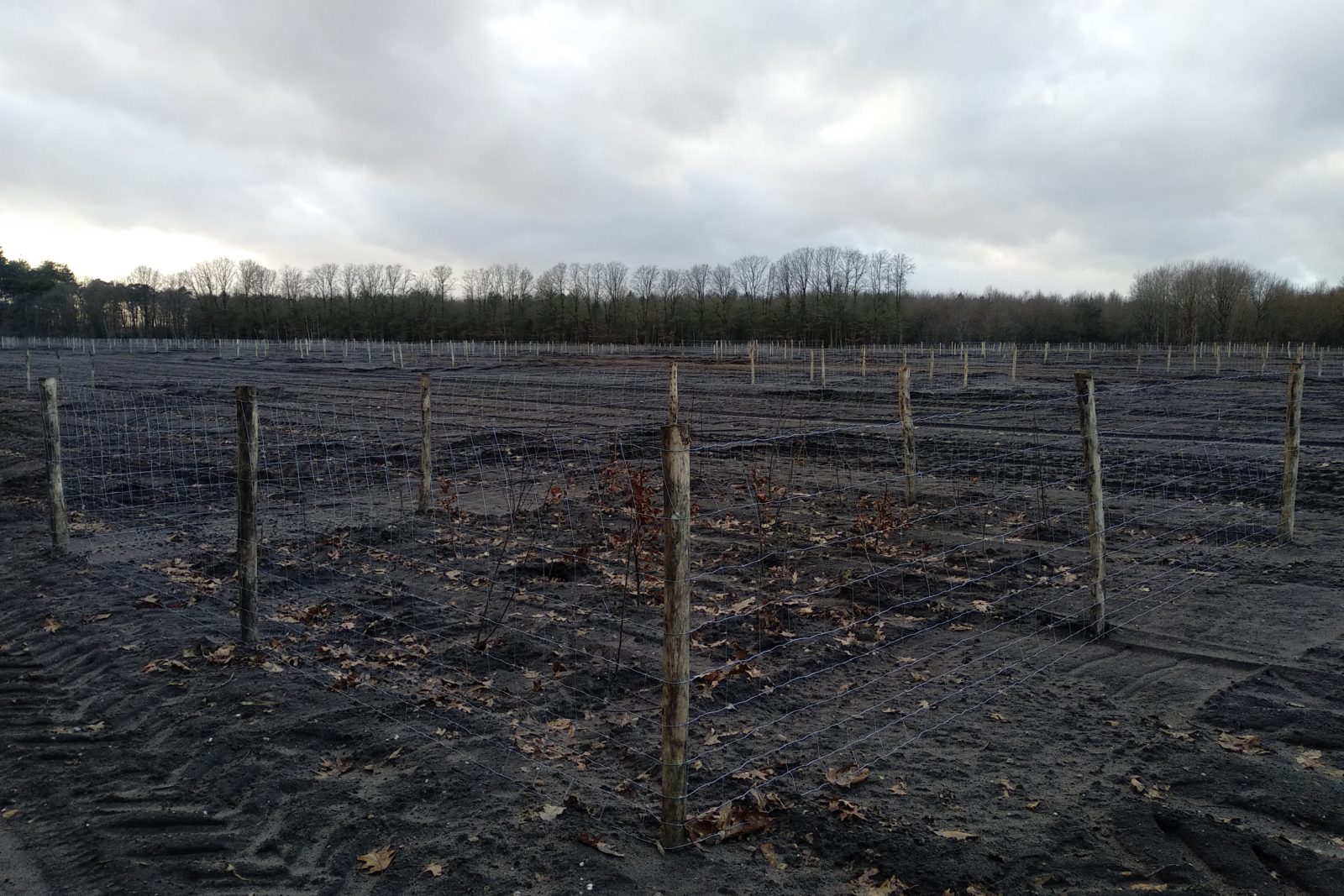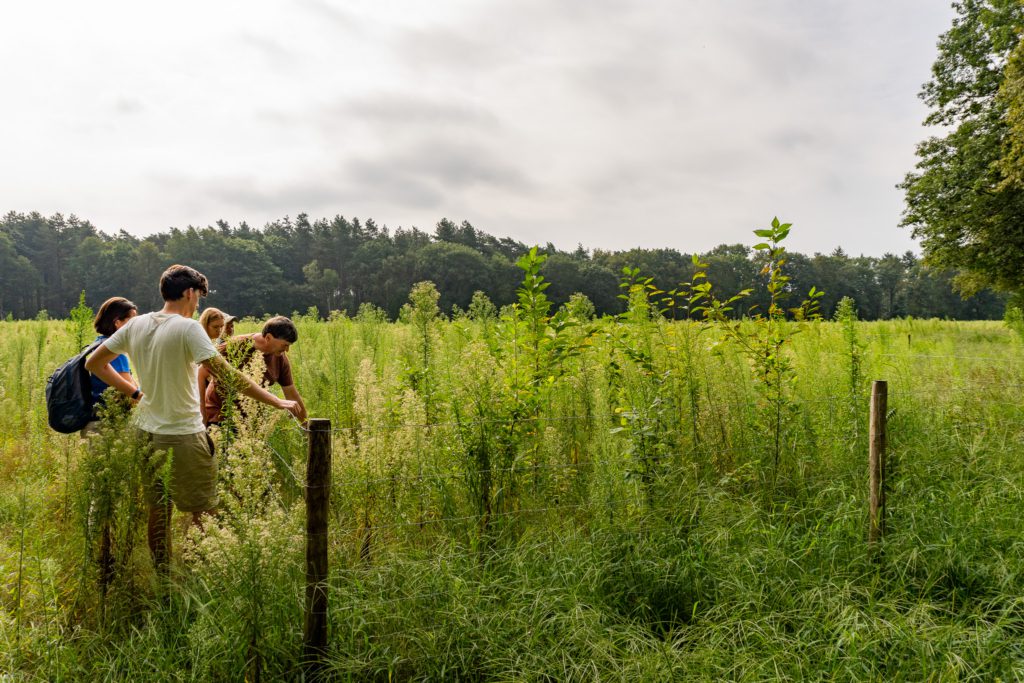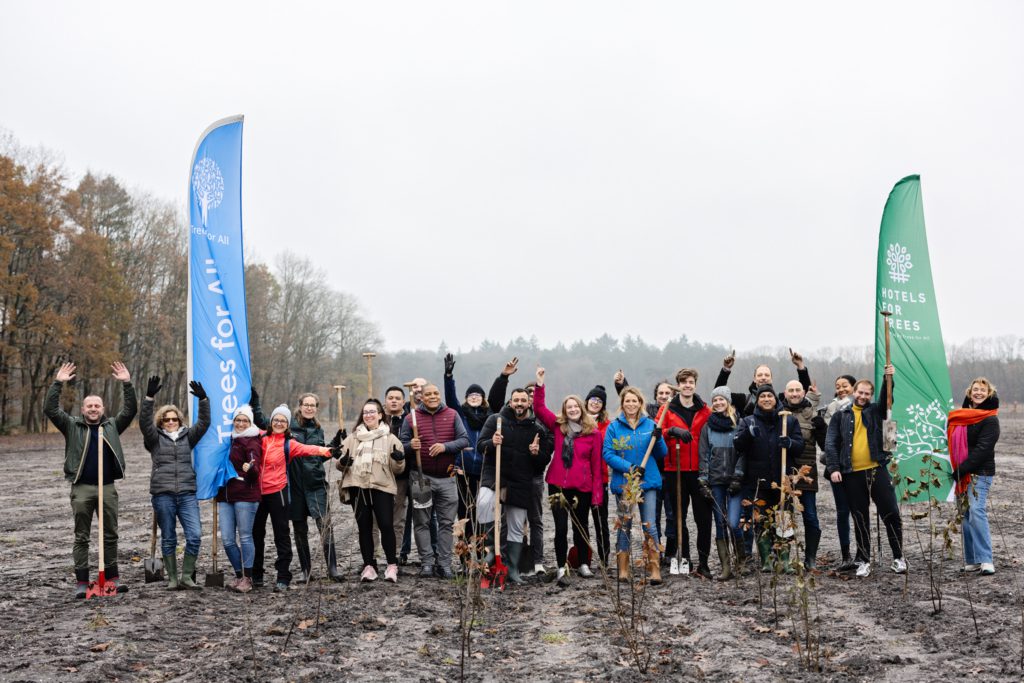Eleven hectares of new forest in Flanders: results of the 2023 – 2024 planting season
14 September 2024

14 September 2024
Thanks to a contribution from Hotels for Trees, we’ve transformed monotonous grassland close to the Luciebos forest in Flanders into a robust forest. In total, we planted 4,770 trees and shrubs, in partnership with Limburgs Landschap Vlaanderen. So we’re bringing the nature there back to life again!
For Dutch, click here.
trees and shrubs
tree and shrub species
hectares of new forest
planting season (Dec – March)
Like the Netherlands, Flanders also has the ambition to plant more forests. And there was a great opportunity to do so at a spot close to Houthalen-Helchteren. In between several woodland areas was a large grassland of eleven hectares. This piece of land was of very little value for the local nature. All that grew there was perennial ryegrass, which is used as cattle feed. In the past, the land was also used for growing maize.
As only one species grew there, the grassland wasn’t an attractive habitat for plants and animals, so its biodiversity was extremely limited. Furthermore, the land had been intensively fertilized and mown, preventing the development of nature. That’s all changed now, due to this project!
In partnership with Limburgs Landschap Vlaanderen, we’ve transformed the grassland into forest, linking up existing nature to form one big natural area, where all sorts of plants and wildlife feel at home. We were able to carry out this project thanks to a donation from Hotels for Trees.
In the 2023-2024 planting season, we planted a total of 4,770 trees and shrubs. Our donor Hotels for Trees helped us with the planting. On a wintry planting day in December 2023, participants rolled up their own sleeves to plant some of the trees. In the summer of 2024, we visited the planting location to see how the trees were doing. And the good news is that the trees are growing really well!

The plant site in December 2023

The plant site during the field visit in summer 2024
The forest is specially dedicated to the five-year-old Lucie Geuens. Lucie has the extremely rare condition Pitt Hopkins Syndrome, meaning she suffers from developmental delay and mental disabilities. Through ‘Plant a tree for Lucie’, Limburgs Landschap organised a big tree planting campaign in December 2023, to benefit De Appelboom in Genk, the day treatment centre Lucie attended for two years.
In the Luciebos, the trees are planted in a ‘kloemp’: a small group of trees and shrubs measuring about six by six metres. Each plot contains trees of a single species, such as English oak, silver birch, wild cherry or beech. Various species of native shrubs, like alder buckthorn and hazel, are planted around the trees. All in all, around 25 trees and shrubs are planted in one plot. The trees compete with one another for sunlight: the first up get the most light and thus grow faster. The ultimate goal is to retain at least one ‘future tree’ per plot. These trees provide shade and nutrients in the soil, which soon creates a forest ecosystem.
Open patches are deliberately left between the ‘kloempen’, so that space is created for natural rejuvenation. This is the process whereby seedlings or shoots spontaneously emerge from the seeds, nuts or roots of tree species in the surroundings. This planting method ensures more variety in the forest and different structures of taller and shorter plants. So we let nature do its own thing as far as possible, so that the forest can develop naturally and grow gradually denser.
This planting method seems to have worked very well, as within six months the bare landscape has been transformed into a green oasis! Despite the extremely wet winter and spring, the trees have taken hold really well. The tallest trees have already reached a height of more than two metres. The alders and birches, in particular, are shooting up. Just a few trees had more trouble with the wet ground, like the rowan, but up to now there’s been no loss.
Even better, during our field visit, we even saw many trees and plants that have found their own way to the plot. The field was full of valuable plants for insects, like Mexican fleabane and prostrate toadflax. We also saw saplings emerging, including a maple
When planting new forests, it’s normal that not all the trees survive. So we make agreements with our project partners beforehand about the percentage of loss we allow within a project. Usually, this percentage is between 5 and 15%. If the loss is higher, due to unforeseen circumstances, then new trees are planted in the following planting season. This is also known as refill. So together, we make sure the forest gets off to a good start!
In partnership with Limburgs Landschap, we’ve planted a varied forest, with many different trees and shrubs. A mixed forest like this is much better for the biodiversity of a piece of land than just growing one crop on it. The wider the variety of trees and shrubs, the more different plants and animals will be attracted to the forest in the future. Furthermore, a mixed forest is much less vulnerable to the consequences of climate change, like disease and drought. This is why Limburgs Landschap is aiming to create more and better nature in Flanders.
Thanks to the new forest, we have linked up the surrounding natural areas of Hengelhoef and Zwarte Berg. So we’re creating one big, unbroken natural area that forms a habitat for badgers, tawny owls, woodpeckers, bats and butterflies. And we’re already seeing the results. During our field visit, we saw and heard lots of different wildlife: a buzzard, woodpecker, dragonfly, frog and butterflies. The nature is coming alive already!
Over the coming years, the trees we’ve planted will develop into a young forest. In the initial years after the planting, there will still be a grid around the planting location, to prevent deer gnawing at the saplings. Once the trees are big enough, the grid will be removed. We expect that to be in about five years time. Not only will the trees grow, but the biodiversity will also keep increasing over the years. If you’re interested in finding out about this process, you can read our article How does a forest grow?.

Without the support of our donor Hotels for Trees, this project would not have been possible. Together, we have made the world a little greener again. See you next planting season!